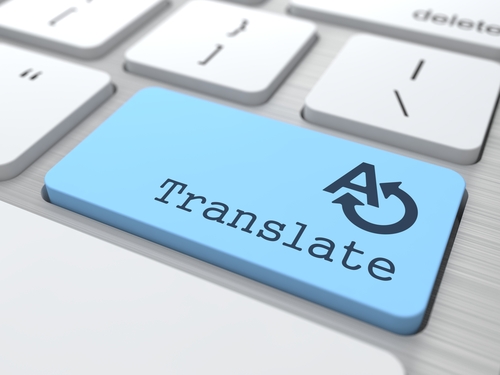
The Spanish Group believes translations and interpretations have traditionally been a field reliant on the skills of carefully trained and experienced language interpreters. However, as we continue to progress into the twenty first century, technology’s intervention has in many ways shifted the translation industry. Yes, human expertise is still an essential component of translation, but because of the ways in which technology can produce more accurate direct translations of text, voice, and even images, translators, though still essential for interlingual communication, must adapt to and become mediators and facilitators of translation technology in order to expedite the process. Below is just a peek into the future of translation.
Text Translating Technologies
Direct text translation has been the field most influenced by radical changes in how technology can assist in translation from one language to another. Because web-based translators have existed for years now, the translations produced by these technologies are becoming increasingly precise and nuanced. For instance, through a quick copy and paste translation into Google Translate’s algorithm, this free and public translation software has become sensitive enough to offer alternative translations and suggestions to idiomatic expressions as well as those that rely heavily on context to accurately translate. This is especially true of more commonly spoken languages such as English, Spanish, and Chinese. Text translating technologies can be helpful for a range of translation jobs from literature to medical document translation. Regardless of the technological advancements, it is still helpful to have a skilled translator or linguist review and revise this translation as necessary, but trends are demonstrating that direct text translations are becoming increasingly more adroit in recognizing the particularities of each language.
Voice Translating Technologies
In addition to direct text translation, voice translation has also seen incredible advancements in the past few years. Nevertheless, the difficulty of voice translation technology is the software’s difficulty in interpreting changes in tone, inflection, and enunciation in the speaker. What’s more, this software also faces challenges in its method of delivery. Some voice translating software can translate from spoken word to written text. However, other technologies translate directly from voice to voice. Just as much as software can face challenges fully grasping the speech of the original language, the translated product also demonstrates that there is still need for development in voice translation software. For example, the translated voice cannot reproduce the same voice as the original speaker. As such, it often emerges as both robotic and monotonous. For simple and quick interactions, this kind of translation has its place, but to be able to fully engage in authentic human interaction this way would require significant advancements in this technology.
Image Translating Technologies And Augmented Reality
The last advancement in translation is using augmented reality in order to immediately translate text-based images from one language to another. This kind of translation technology relies on interpreting images in real time and translating from one language to another, typically using a mobile device with a camera. Apps exist for mobile phone and tablets that are already capable of these real-time translations. Imagine dining at a restaurant in a foreign country, navigating city signs and directions, or using your camera for medical document translation during a travel emergency by simply pointing a camera! This technology is becoming more efficient; however, there is still much work to be done. Typically the source text must be legible and consistent for the camera to be able to interpret it. Second, the translation reproduced in augmented reality on the device screen may be lacking in attention to syntax, word order, and grammatical conventions, producing an imprecise or confusing translation for the user.
So, What’s Next?
In all scenarios, the future of translation continues to integrate technology into text-based, voice-based, and image based translations. Nonetheless, it would be unfair to say that human-facilitated translation in itself will become obsolete. In order for these technologies to advance and evolve, highly-skilled translation experts are still necessary to ensure correct translations when working from one language to the next. What’s more, translators must be heavily involved in the development, implementation, and execution of translation technologies, software, and apps.
Because of the way technology can facilitate and expedite the process of translating, it is important for professional translators to continue to embrace these technologies, blending their traditional skills and expertise with technological advancements
The Spanish Group is here to provide you with professional translations for all your translations needs. Get in touch with us to know more on how we are helping make things easier for individuals and businesses worldwide

